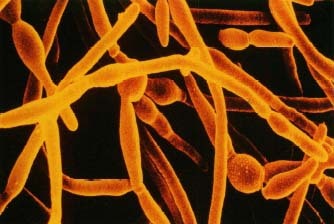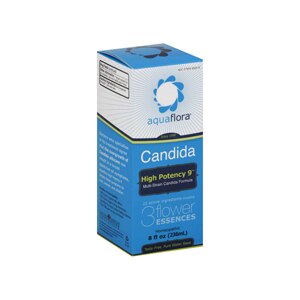 If you’ve ever taken a strong antibiotic, or have an impaired immune system, you may be susceptible to a candida overgrowth. While not dangerous, these overgrowths can cause fatigue, digestive and skin issues, or fungal infections of the skin, nails and genitals. How much is too much, and how can you get rid of excess candida if you are experiencing these symptoms?
If you’ve ever taken a strong antibiotic, or have an impaired immune system, you may be susceptible to a candida overgrowth. While not dangerous, these overgrowths can cause fatigue, digestive and skin issues, or fungal infections of the skin, nails and genitals. How much is too much, and how can you get rid of excess candida if you are experiencing these symptoms?
Candida is a family of yeasts that are the most common cause of fungal infections worldwide. Most of the time, candida live harmlessly on the skin and in the mucous membranes of the respiratory, gastrointestinal, and female genital tracts, kept in check by the healthy bacteria in your gut and your immune system.
Overgrowths can occur when the immune system is compromised, or from taking a strong antibiotic that kills off that good bacteria. Other contributing factors to these overgrowths are a diet high in sugar, alcohol and refined carbohydrates—which feed the yeast—stress, and oral contraceptives.
The treatment for candida overgrowth is two-pronged: First, we want to get rid of the yeast overgrowth, and then we want to re-introduce gut-friendly bacteria that will keep the yeast in check in the future. In order to get the overgrowth under control, the first step is to eliminate all foods from the diet that are high in refined carbohydrates, alcohols and sugars, such as bread, pasta, candy, and even fruit and starchy vegetables.
Modifications in diet alone can take up to six months to produce a significant change in candida levels, so it’s also important  to add a complementary candida detoxification formula, such as SafeCare’s Candida Rx Formula, the High Potency 9 Multi-Strain Formula from Aquaflora, or Innate Response’s DysBio formula. These products help get the yeast under control quickly so that you can begin to re-introduce healthy bacteria and enzymes to your system.
to add a complementary candida detoxification formula, such as SafeCare’s Candida Rx Formula, the High Potency 9 Multi-Strain Formula from Aquaflora, or Innate Response’s DysBio formula. These products help get the yeast under control quickly so that you can begin to re-introduce healthy bacteria and enzymes to your system.
The second step is to introduce probiotics to boost the good bacteria in your gut. Increase your intake of foods that are rich in probiotics, such as yogurt and fermented products—pickles, kombucha or sauerkraut—to encourage the growth of these beneficial bacteria. Products such as Aquaflora’s Probiotic Restoration and Enzyme Restoration also help restore the good bacteria in the upper and lower GI tract, and may start relieving symptoms immediately. It’s also important to take a daily probiotic in order to maintain this yeast-unfriendly environment, such as Flora 50-14, or Probiotic 42.5.
Candida overgrowths can be stubborn and hard to treat, but with the right diet and the right products, it’s possible to get your yeast levels under control and find relief from a multitude of chronic symptoms.





Speak Your Mind